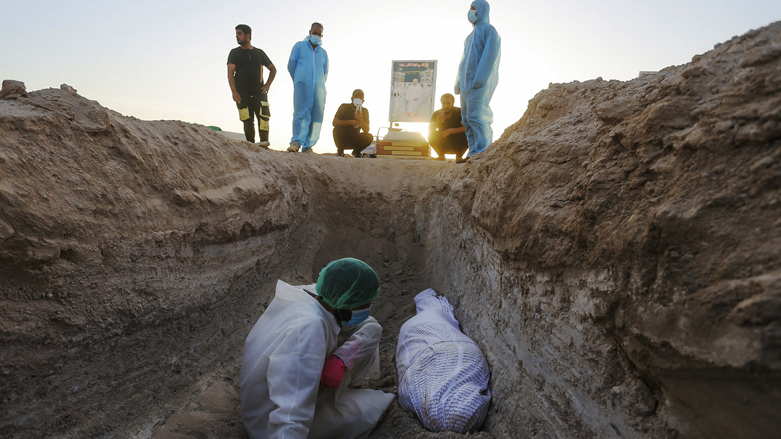COVID-19: Kurdistan records 64 new cases; Iraq announces 'red leap'

ERBIL (Kurdistan 24) – The Kurdistan Regional Government’s (KRG) Health Ministry on Tuesday announced 64 new coronavirus cases and three deaths over the previous 24 hours, while its federal counterpart in Baghdad said it had confirmed an increase that it characterized as a "red leap."
According to the autonomous Kurdistan Region, 28 new cases were recorded in Erbil, 20 in Sulaimani, and 16 in Duhok, while three patients died in Duhok and a third in Sulaimani. No new cases or fatalities were reported in the fourth and smallest regional province of Halabja.
And in Iraq, the Iraqi Ministry of Health announced what it called a "red leap" in infections, despite repeated warnings by health authorities that the outbreak of a second wave, more deadly than the first, was likely if the Iraqi public did not start to consistently follow public health rules and suggestions instated to curb the spread of the highly-contagious disease.
Iraqi Minister of Health and Environment Hassan al-Tamimi on Thursday warned that Iraq is on the verge of a "very large wave" of coronavirus infections and deaths as a result of public commitment to preventive health measures like wearing masks being "almost non-existent in the streets of Iraq."
Read More: COVID-19: Iraqi health minister warns of 'very large wave' due to lack of mask-wearing
The Iraqi Ministry of Health recorded 1,994 new infections and eight deaths over the past twenty-four hours, compared to 1,713 infections and six deaths recorded the previous day.
Health Ministry Spokesperson Saif al-Badr said that the increasing daily rate of infections requires more commitment to wearing masks, social distancing, and hand-washing.
The coronavirus has infected nearly 107 million people worldwide and killed over 2.3 million, according to Johns Hopkins University’s database. The actual figures could be dramatically higher due to insufficient testing capabilities or underreporting.
Editing by John J. Catherine
